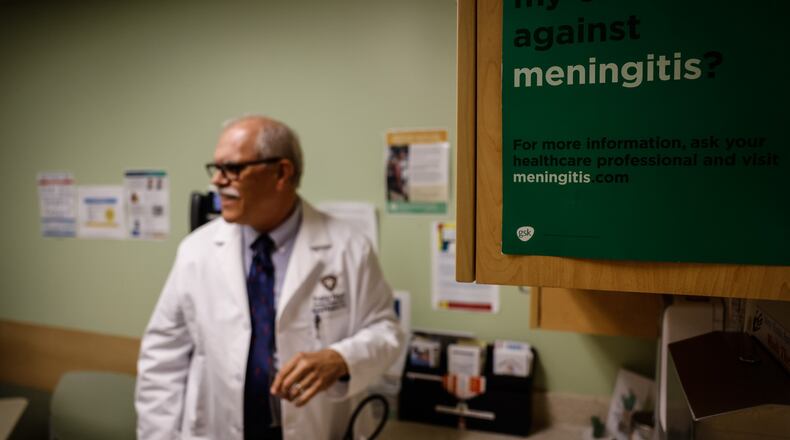When children are vaccinated, it provides personal protection but also helps protect those who are too young to get the shots or otherwise not immunized.
“If something is introduced to children, those that are unvaccinated are not protected,” said Dr. Michael Dohn, medical director for Public Health-Dayton & Montgomery County. “Of course then they can easily become infected and then spread that to other children who are not vaccinated.”
The Centers for Disease Control and Prevention said in March that public sector vaccine ordering data showed a 14% drop in 2020-2021 compared to 2019, and the measles vaccine is down by more than 20%.
Melissa Wervey Arnold, CEO of the Ohio Chapter of the American Academy of Pediatrics, said they won’t have data until the fall on whether more children are getting caught up.
Children in kindergarten through grade 12 should receive various vaccines depending on their age, including diphtheria, tetanus, pertussis, polio, measles, mumps, rubella, hepatitis B, chickenpox and meningococcal.
Credit: JIM NOELKER
Credit: JIM NOELKER
Visits to primary care providers plummeted after the coronavirus pandemic started, and that also meant skipped well-child visits and scheduled vaccinations.
“There were a lot of people who simply did not get medical care, whether it was children, whether it was people with chronic disease, even people with emergencies,” Dohn said.
While rates of scheduled childhood vaccines have generally kept preventable diseases at bay in Ohio, pockets of outbreaks have popped up over the years in low vaccinated populations, such as a 2014 measles outbreak.
“Vaccination is one of those fundamental activities, such as making sure we have clean air, that we have safe food, that we have an environment that is safe — all of those activities underlie our well being,” Dohn said. “That includes not just whether we’re sick or not, but also our mental health and our economic activity.”
COVID-19 vaccinations are also available during childhood vaccination appointments at Public Health. Required school vaccines and the COVID-19 vaccine both may be received during the same visit. The Pfizer vaccine has been authorized for children 12 years and older.
The second shot should be scheduled three weeks after the first. So a person who got a Pfizer vaccine on July 20 could get their second shot on Aug. 10 and be considered fully vaccinated by Aug. 24.
In Ohio, COVID-19 cases have been creeping up this month. More than 600 new cases of the coronavirus were reported Monday for the first in more than three weeks in Ohio. Statewide, hospitalizations from COVID-19 remain much lower than the brutal peak of over 5,300 people hospitalized at a time, but the 313 hospitalized Monday is up from the 200 hospitalized on July 9.
Vaccine clinics
- Public Health-Dayton & Montgomery County offers vaccinations at its clinic located at 117 S. Main St. on the third floor of the Reibold Building. Free parking is available in the attached garage.
- Parents should bring their insurance information, but no one will be refused service due to inability to pay.
- To schedule an appointment or for more information call (937) 225-4550.
- Regular childhood vaccines are also available through your primary care provider and most pharmacies.
About the Author


